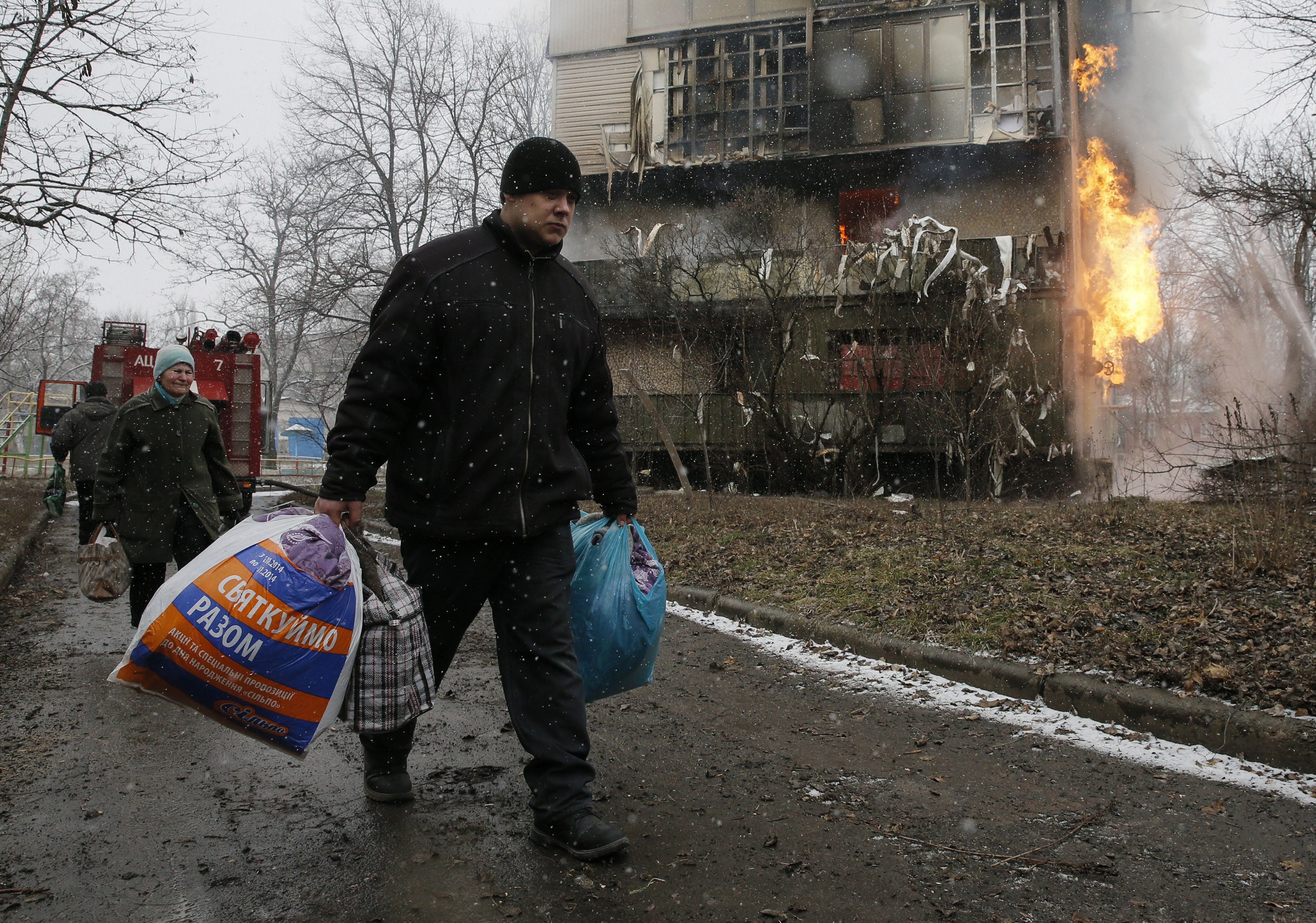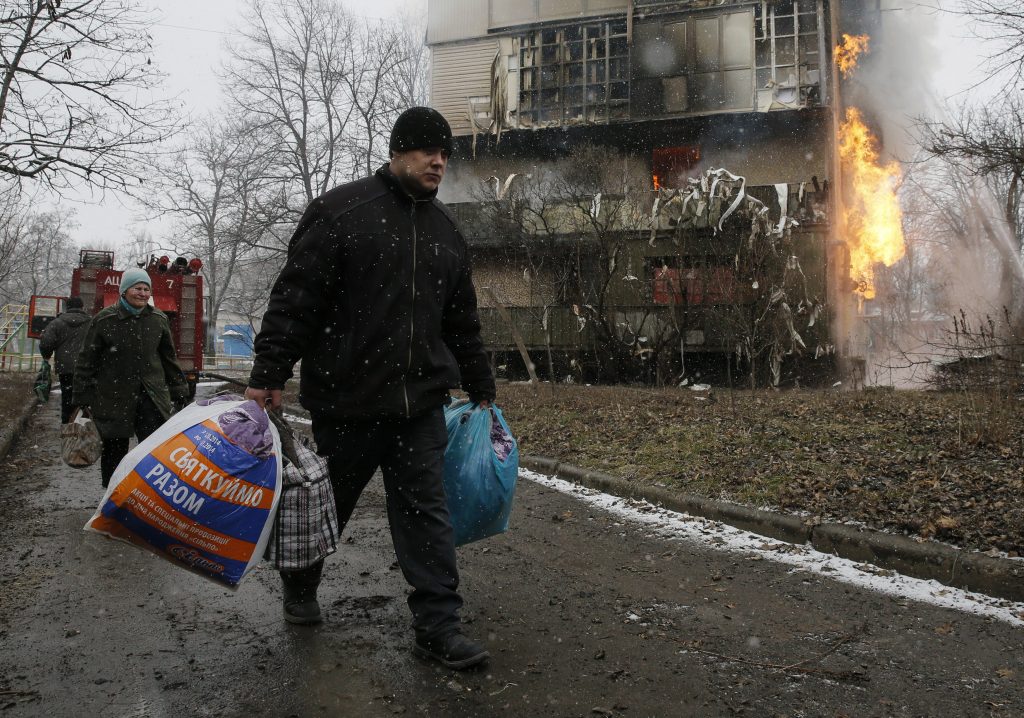
If Russia Permits, the Minsk Accord Could Be a Start for Stabilizing Donbas
The ceasefire agreement signed by Russia and Ukraine on in Minsk on 12 February offers what German Chancellor Angela Merkel calls “a glimmer of hope, no more no less” for constricting, and eventually ending, the war in southeast Ukraine’s Donbas region.
Whether that hope is sustainable will now be determined by the agreement’s implementation—and most heavily on Russia’s real desire. The accord contains some timing and sequencing problems that don’t augur well—but also elements that could comprehensively resolve the crisis.
At Minsk, Ukrainian President Petro Poroshenko held a bargaining position weakened by Russia’s military offensive in the southeast (as noted in an essay today by the Atlantic Council’s John Herbst). Beyond that, Poroshenko and his government face other challenges: an increasingly likely default on Ukraine’s public debts, a difficult reform process requiring overhaul of most governance structures, and allies divided over whether or not to send Ukraine weapons.
Ukraine Gains—in Theory
Despite Ukraine’s crises (deeper and more existential than Russia’s own economic and diplomatic challenges) it has at least in theory made important gains in Minsk. If the agreement is implemented, Ukraine’s sovereignty and integrity of territory will be preserved. Foreign (that is, Russian) heavy weapons and fighters are to leave. Hostages, including Ukrainian military pilot and recently elected parliament member Nadiya Savchenko, are to be released. And a door is left open for Donetsk and Lugansk provinces to be fully reintegrated into Ukraine. The truce deal omits any mention of the federalization of Ukraine, a deployment of Russian “peacekeeping” forces, or a freezing of its cooperation with NATO, which Russia has sought in the past.
But a first problem of timing is that the ceasefire begins only on Sunday morning, February 15. This may give Russian forces time to complete their attempt to crush Ukrainian troops at Debaltseve, on a strategic rail and road junction where as many as 5,000 people still are sheltering, according to monitors of the Organization for Security and Cooperation in Europe. If the recent heavy fighting there leads to another heavy loss for Ukraine, it is hard to see how Minsk II will survive.
A second problem—of both timing and sequencing—concerns the provision for Russia and its proxy forces in Donbas to return control of Ukraine’s border with Russia to the government in Kyiv. As pointed out by Lithuanian President Dalia Grybauskaite, “The main part of a solution is the control of the borders. It was not agreed and was not solved.”
Ukraine is to regain control of its border with Russia only at the end of this year, after local elections are held. Yet experience with numerous post-war rebuilding processes has made it clear that elections should be held only after security is guaranteed. The Minsk agreement defies logic, history and the basic rules of government in implying that Kyiv might be able to control an election process in two border provinces without controlling its side of that border.
If There’s a Will to Implement, There’s a Way
As did the first (and unfulfilled) Minsk Protocol in September, the new agreement will rely heavily for implementation on the Kremlin’s real intent. If the government of President Vladimir Putin wants to see the truce succeed, it could unilaterally invite an expansion of the border monitoring mission run by the Organization for Security and Cooperation in Europe. The OSCE’s current presence, at only two border crossing points, should be extended to the full 400-kilometer (250-mile) border. OSCE could deploy more aerial surveillance drones and satellite technology to more effectively fulfill its task in the new agreement to verify the ceasefire and the withdrawal to Russia of heavy weapons that have been deployed to Ukraine.
The new ceasefire deal provides that the Russian-dominated (southern) zones of Donetsk and Lugansk provinces should have a “special status” under a new constitution that decentralizes power in Ukraine. Kyiv is tasked with restoring social and economic links with the two zones, including banking services, pensions and welfare payments. (Payment of salaries for teachers, medical professionals and other public employees is not mentioned, but should re-start.) Elections are to be monitored by the OSCE, which might best facilitate or even physically organize the polls under Ukrainian electoral law, following the pattern it has used recently in northern Kosovo and previously in Bosnia-Herzegovina.
If implementation of this deal becomes serious, Russia and Ukraine could shape the “special status” for the Russian-dominated zones of Lugansk and Donetsk along lines recently used by Serbia and Kosovo on the status of Serb-majority northern Kosovo. As is reflected in a footnote to the February 12 agreement, the “special status” entities should have the right to choose their own official language — which in Donbas will certainly be Russian rather than Ukrainian. They should participate in the selection of (local) judges and prosecutors; have their own polices forces; and have the right to develop ‘cross-border cooperation’ with Russia.
Gaps in the Agreement
If the February 12 accord is sustained as the roadmap to stabilizing southeastern Ukraine, it contains critical gaps that should be filled. A stabilization process should offer a right of return for the roughly 1.6 million people forced to flee their homes there, and aid will have to be found for people to rebuild. Compensation should be given to those whose property has been destroyed. While the accord guarantees safe passage for humanitarian aid, it says nothing about how Russia and Ukraine may share the financial burden for reconstruction. No large-scale international donor conference is promised to cover the post-war needs already laid out by the Ukrainian government and by UN agencies.
A true stabilization process will require establishing justice and reconciliation, which also are unmentioned in the Minsk accord. The OSCE could deploy human rights and local governance officers to help investigate war crimes and facilitate community dialogue on a truth and reconciliation process. The European Union currently runs an advisory mission to Ukraine to help reform police services and rule of law. That could be expanded to Donetsk and Lugansk.
Neither special zone should have rights to affect national-level decisions. Donetsk and Lugansk should be treated as separate regions and not a unified “Novorossiya” or “Donbas.” They should forfeit the right to use any “state-like” symbols such as their own currency, license plates, IDs, etc.
A Minsk process implemented and supplemented in these ways would weaken Russia’s ability to undermine Ukraine’s democratic transformation and Kyiv’s association with the European Union. Economic sanctions against Russia should remain in place at least until the local elections are held. And if Russia violates its commitments in this accord, more sanctions should be imposed immediately. Hope is sustainable only if the good will on which it is based is verifiable.
Sabine Freizer is a senior fellow of the Atlantic Council based in Istanbul. She serves as an adviser to the Open Society Foundations in Ukraine.
Image: Residents at the edge of Donetsk city carry bags of their belongings past an apartment building shattered by shell fire on February 9. The signing of a cease-fire offers a ‘glimmer of hope’ for the region which the European Union will try to sustain by keeping or raising sanctions to ensure Russia’s compliance, said German Chancellor Angela Merkel. (Reuters/ Maxim Shemetov)

